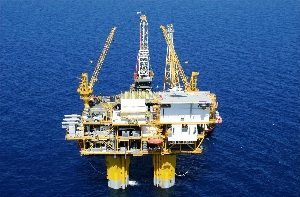 New projects on the rise but simpler and cheaper as fiscal discipline takes hold. Helped by higher oil prices, deepwater drilling is back — but with a difference. Newly approved projects are cheaper, simpler and often smaller than those sanctioned previously.
New projects on the rise but simpler and cheaper as fiscal discipline takes hold. Helped by higher oil prices, deepwater drilling is back — but with a difference. Newly approved projects are cheaper, simpler and often smaller than those sanctioned previously.
Schlumberger, the world’s largest listed oil services company, has hailed a return of drilling deep beneath oceans as oil majors move back into a high-cost, high-risk area that was all but abandoned during the oil price slump. Royal Dutch Shell, Total, BP and Equinor are redesigning projects to reduce complexity and better utilise existing infrastructure. They are also negotiating better terms with contractors and using technology to drive efficiencies and cut jobs.
Drilling in deep water — defined as water depth greater than 300m — has traditionally required high oil prices to ensure profitability. However, the economics of some projects can now challenge US shale fields making them attractive.
Norway’s parliament approved Equinor’s $6bn project to develop the Johan Castberg oilfield in the Arctic last month. Plagued by high costs and delays, the project was redesigned to cut spending by half and can now be profitable should prices fall to $35 a barrel. Equinor said this marked a “breakthrough” for its deepwater strategy. Schlumberger added that similar drilling activity in deep water fields will be up 10 per cent in 2018 from last year and even higher in 2019.
Shell, which will be among the first of the oil majors to report quarterly results on Thursday, is also benefiting from what exploration and production chief Andrew Brown called a “lower-cost developmental approach”. Just months after it won blocks in Brazil’s Atlantic waters, Shell snapped up nine of the 19 Gulf of Mexico oil and gas blocks awarded in a Mexican auction in January.
Activity in the Gulf of Mexico is picking up. The Trump administration’s rollback of offshore drilling rules put in place after BP’s 2010 Deepwater Horizon disaster could also prime the way for more drilling in the US outer continental shelf.
In addition to the Gulf of Mexico and Brazil, for BP it also means large opportunities in Mauritania and Senegal. Unproven resources in Nova Scotia, South Africa and Namibia could also be lucrative for companies.
Source: “Oil Majors Return to Deepwater Drilling”, Financial Times
